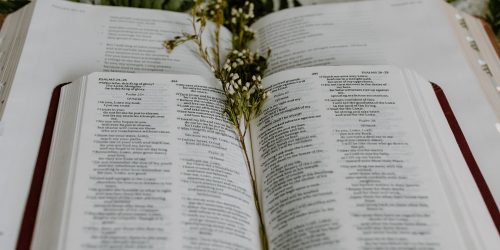
There certainly is no doubt that what we believe is important as well as our ability to teach it. Paul says, Patiently correct, rebuke, and encourage your people with good teaching (2 Tim. 4:2). We might believe that correct thinking leads to goodness (correct behavior) and that beauty flows as the result. I would suggest, however, that the overemphasis on our thinking has robbed us of a much-needed balance in our approach to the spiritual life of a disciple.
In the book of Genesis, God took was without form and void (1:2) and created order and beauty. He created the heavenly planets, water, continents, our ecosystem with plants, fish, animal, and human life. We humans were created in His very own image as male and female. Before sin, all was beauty! There was no cycle of the seasons. Life was lived in its fullest with one revelation of beauty after another bursting onto the senses of our first parents. The wonders of nature still exist, although in a diminished state.
Jesus chose to come into this world, damaged and diminished by sin, to begin the process of restoration of beauty. Through His death, He plunged into darkness, but through His resurrection, He guaranteed the possibility of Edenic restoration in the earth made new to all who would receive it. Yes, beauty will be restored! But how does this relate to life on earth in the present?
Love creates and builds, but fear and hatred destroy and disintegrate. When, as parents, we know our children well enough that we see them and respond to their needs with love and care, we are creating beauty in them. When they are hurt and we respond with soothing comfort, we reflect the God of all comfort (2 Corinthians 1:3). When we provide a safe environment in which they can grow, we are creating secure attachment in them with us and, subsequently, with God as their heavenly parent. In this process of their being seen, soothed, safe and secure, neural networks are being created in the brain that allows that child to grow into a loving, well-differentiated person who does not live fearfully, anxious about what others think of him/her. They have no need to control what others think because they are grounded in what God thinks and says about them (e.g., Isaiah 43:4, Psalms 139, Ephesians 1 and 2).
John’s first epistle begins by proclaiming Jesus, the One Whom we have heard and seen. We saw Him with our own eyes and touched Him with our hands (1 John 1:2). They experienced the beauty of Jesus with their senses and were changed by Him (2 Cor. 3:18). The Gospel is still being written today in the lives of God’s children as they love sacrificially, investing in the lives of others. Embracing these realities integrates both our thinking brain and our creative feeling brain, thus building mature disciples of Jesus who follow Him wherever He leads, not as a duty, but as a love response to the beauty of His creative presence in them.
David Sedlacek is professor of Family Ministry and Discipleship at the Seventh-day Adventist Theological Seminary